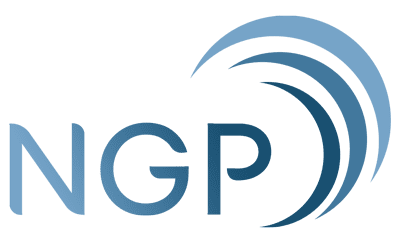If your website isn’t getting the kind of traffic that you want, the first thing you need to evaluate is how effectively you’re doing SEO–or whether you’re even doing it at all.
SEO or search engine optimization is the tried and true process of increasing website traffic by improving your website’s rankings on search engine results pages (SERPs).
This can be done through on-page and off-page techniques that focus on making it easier for search engines to index your web pages and “think” of your content as authoritative and trustworthy.
Unfortunately, results don’t appear overnight.
SEO is a long and often painstaking process that involves hundreds of hours of research, link building strategies, and even improving a website’s user interface, among many others.
But when done right, SEO techniques can produce lasting results that continue to drive qualified traffic to your website.
All it takes is knowing the best ways to optimize your website, plus a great deal of patience and trust in the process.
How SEO Drives Website Traffic
We know that SEO is the most effective way to improve web traffic. But how exactly does it do this?
There are three main ways through which SEO drives qualified traffic to a website.
Increases Visibility and Engagement
SEO techniques improve a website’s rankings on search engine results pages. This makes websites more visible, increasing the likelihood that people will visit.
But visibility alone is not enough. To drive quality traffic, the people that get to the searches where you rank should also be ready to engage with your brand. The more intentional the search, the more likely that searchers are looking for answers to a solution that YOU can provide.
That will lead to not only an increase in traffic, but a boost in conversion rates as well. This means the number of people that go to your website to purchase, use your service, or make a meaningful interaction.
Ultimately, that’s what you want to drive towards.
Builds Trust and Credibility
Effective SEO techniques also build trust and credibility for a website. Tactics like backlinking to authority sites, as well as including internal and external links, make brands more appealing to target markets because they establish trustworthiness.
Credibility isn’t something that you gain instantly, though. So be patient and consistent with your efforts. As long as you’re optimizing your website, you will see results.
Improves User Experience
The better the user experience, the better the chances of Google ranking your website higher in search results.
One of the most common mistakes that people make is focusing on other SEO techniques, while forgetting about UX. Certain aspects of user experience, such as web page loading speeds, the amount of white space, and design simplicity, have an impact on Google rankings.
To have a better idea how Google gauges user experience, you can read up on Google’s Page Experience Report. It outlines the way Google evaluates websites for page experience.
The better the experience, the more Google ranks a website as trustworthy.
Best Practices for On-Page and Off-Page SEO
Off-page and on-page SEO techniques are the ways with which you can optimize your website internally and externally.
Here are best practices that you can follow when trying to get your website to rank.
On-Page SEO Best Practices
On-page SEO is the process of optimizing your website by improving internal content and web user interface.
Use SEO Plugins
If you are a newbie at SEO or don’t have the time to do the work manually, you can use SEO plugins on your website. These give you instant SEO analyses of your site, as well as the ability to optimize without spending hours on manual research and web content tweaking.
However, it’s best not to rely on automated tools like these entirely and get professional digital marketing services instead for a more comprehensive approach. Pros generate better results, and you get to be involved throughout the process.
Pick the Right Keywords
The right keywords are vital to a successful SEO campaign. This is why you can’t do without meticulous keyword research and selection.
One of the things that we’re finding out recently is that long-tail keywords are actually much better at generating qualified traffic.
People who use long-tail keywords in their searches are much more intentional at searching for answers and solutions. They are also typically already ready to engage with the best results that appear on SERPs.
To fast-track your keyword search, use keyword research tools like Ahrefs.
Update Your Content Regularly
Authoritative, credible, and useful content is your best shot at generating long-term results. However, this doesn’t mean you can publish content in 2023 and leave it as is until 2050, especially when you’re working on a company blog that links back to important pages on your website.
As much as possible, content should be evergreen. In fact, any writer will tell you this is almost always the goal.
However, this has its limits.
People and search engines prefer new or updated information. The fresher the content, the better your pages will perform in search rankings.
Include Internal and External Links
Another effective way to build trustworthiness is by linking to internal web pages as well as external authority sites.
This also makes it easier for people to access related pages or information when browsing your website.
Optimize Your Images
Don’t forget about the images! They need optimizing too.
More often than not, clunky websites are caused by bloated, uncompressed images. Using formats, like PNG, that make photos load faster is a great way to avoid this.
Off-Page SEO Best Practices
Off-page efforts typically take longer to generate results. But when they pay off, the rewards are huge. Here’s how to make that happen:
Use Local SEO
Local SEO is an effective way to provide credible links back to your website. This is done by using local keywords that engage users who are ready to go into your establishment, not just your website.
Although this can also be done internally, good ways to maximize local SEO efforts include using local citations and getting local bloggers to link back to you.
Develop Backlinks
Backlinks are harder to generate than internal and external links. But they are far more effective at building credibility.
Refrain from using black hat techniques, like incorporating hidden links and keyword stuffing, that trick users to go to your website. These will backfire on you!
Focus instead on building valuable relationships with credible sites and getting them to mention you.
Get a Pro to Grow Your Traffic
SEO can be a bit overwhelming, we know. That’s why we recommend getting experts to help your website rank.
Partner with a trusted digital marketing agency that knows SEO like the back of their hand. NGP-IMC delivers effective, personalized, and impactful marketing strategies that get you real, measurable results.
Contact us to get started!
Jossaine Nunez is a freelance article writer, blogger, and SEO-driven maven. While her true passion lies in writing fiction, her love for storytelling extends to helping brands convey their message in ways that are both engaging and helpful for attaining their business goals.
Jossaine’s interests in writing particularly about people, for people – which translates to brand audience engagement – stems from her experience as the Editor-In-Chief of Siliman University’s The Weekly Silimanian, which published slices of life and educational pieces surrounding university life. Her piece, A Review of Leoncio Deriada’s People on Guerrero Street, published in the Silliman Journal on discussions and investigations in the humanities and sciences, earmarks her foray into the world of writing about, and writing for, humans that make the world go round.


